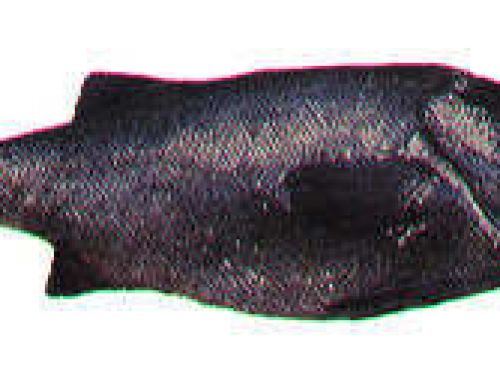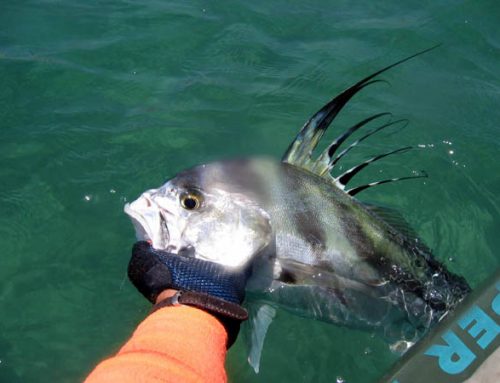In the sport of rod and reel fishing there are many experts. Some make their presence known to the kayak fisherman every time they enter into a conversation and make statements like “for the kind of fishing you do” and the ever precious “have you thought about putting a motor on it?”. For the record, a motor on a kayak makes as much sense as a 5th wheel on a car. That is why we have inflatables Not to be caught unawares, the expert will inevitably part with a “too bad” comment, such as “too bad you can’t fish the islands in that thing”. Funny thing about the experts is I have yet to meet one who has fished from a kayak. Kayak anglers are serious and committed people who often appreciate ten times the amount of fishing as “the experts” who take 3 months to recount their 2 day trips. Kayak anglers cut their teeth in bays and kelp forests then move on to more serious structure in their quest to land fish like 40+ pound halibuts and sea bass. Going on vacation means the opportunity to do battle with tarpon, sailfish, salmon, tuna and other huge fish that lend an “extreme” quality to “the type of fishing we do”.
There is no vessel afloat that gives the angler the access, ease, and affordability to fish the inshore as the kayak does. When the yellowtail show up we don’t go bass fishing, and when the squid boats arrive late in the fall, the thought of catching a forty pound white sea bass keeps us up at night. Kayak anglers can and do fish the offshore islands and there is no better destination than Santa Catalina Island, California.
When the seas are calm, Catalina puts the paradise back in your fishing. Paddling around the island the sights are breathtaking. As you glide along the inshore, a variety of landscapes from rocky cliffs to oak groves meet the sea. Sea caves, blowholes, bays, and stretches of sandy beach surround Catalina. With this type of structure often bordering thick kelp forests, the fishing possibilities keep you busy from dawn `till dusk.
There are several ways to do Catalina on the kayaks. My first choice is to pry Pete Gray away from his office, load our kayaks on his sportfisher and motor across the channel. Having picked up a load of live bait from the receiver, the mothership moves the smaller fleet around in search of the hot bite. At days end, getting a mooring at Avalon allows you take dinner in town and get a room if you’re so inclined, or just sleep on the boat. Some of the best fun I have had in years has been doing these island excursions.
New fishing situations become learning experiences that add to my arsenal of angling knowledge. Fishing with Pete is no exception. Like most great anglers, he has the touch with certain fish. When the stories of Pete and yellowtail started filtering to me I got really excited because yellowtail had been my “unlucky fish”. After hitting the bait receiver for a load of sardines, he moved us outside the harbor to make a few mackerel. Good thing too, it seems that in sportfishing the best bait is often the one you don’t have so the more variety the better. One of the most relevant things Pete told us in our quest to “learn” how to catch a yellowtail on the kayaks was the distinct advantage paddlers have in their ability to slow troll a live bait. Twenty minutes into trolling an area on the backside of the island, I hooked my first kayak yellowtail. Just a small “firecracker” the jack gave me a taste of what these fish are all about. The real test came 10 minutes later when our radio host got hit by a monster. Seeing the rod bent nearly in half as he gained position on the fish told me I had plenty of time to get there to assist with the landing. Fishing with Pete since the beginning of the year, I knew this was his biggest kayak hook-up. After a 15 minute battle a 25 pound yellowtail showed color and was brought to gaff. Even though he has caught much larger fish, Pete confirmed something I have maintained for years, “there is nothing like catching them on a kayak”. A luxurious sportfisher is not required to mothership kayaks. Sometimes I will load the “yaks” onto a friends sailboat or have them portaged to the islands by shipper or outfitter. This is remarkably inexpensive and lightens the commute. Camping at Catalina is another option. Secluded coves are abundant and although most Catalina campsites are considered “remote”, basing your stay out of Avalon or Two Harbors sets up the potential for a trip that really can’t be done anywhere else.
And then there is the fishing. Catalina has it all during the course of the year right down to the weather. Having so many miles on the inside, refuge from wind and swell is usually attainable. Yellowtail and white sea bass are the biggest prizes to be pursued. Halibut, calico bass, sheephead, bonito, and barracuda can all be fished with overwhelming success. In most cases success can be achieved by sticking to the artificial lures. For the beginner, this is an easy way to fish while getting comfortable on the kayak. But the ease of kayak fishing, coupled with the long history our waters have as a live bait fishery, make the perfect marriage. Experience shows that fishing the live baits aggressively, yields more overall hookups with bigger fish. The Plano Trolling Bait Bucket will keep baits alive for hours.
Trolling is probably the most tedious exercise on a kayak. A clear understanding of the kelp, rocks, current, and all of the conditions of the area to be trolled are crucial. Anchoring to the bottom and surface structure as well as drifting, are usually more productive than trolling unless you are in the optimum situation. Break-offs for example, occur when shallow rocky structure is trolled, and the results are no fish landed.
Mothership fishing is one of the best ways to get out of your backyard fishery and exploit the Channel Islands. With minimum effort and planning Catalina Island will support every kind of trip to fulfill your needs. From a simple trip with the guys to a full fledged family vacation (even a posh romantic getaway), Catalina is one of those quiet treasures sitting a few miles within reach. On top of it all, the fishing is often “resort quality”.





